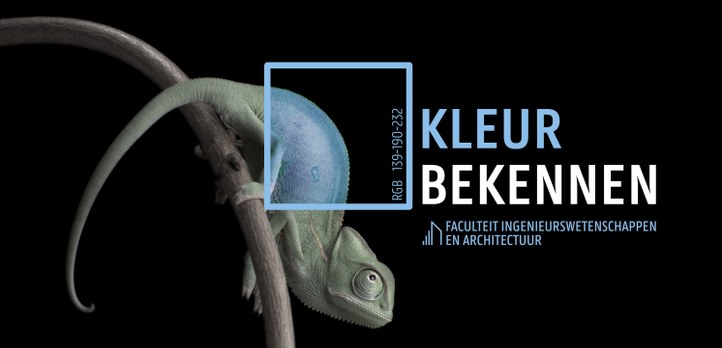Faculty Color Change
The corporate identity color codes of the Faculty of Engineering and Architecture will change at the start of the 2021-2022 academic year.
In 2016, UGent renewed its corporate identity, giving each of the 11 faculties its own visual identity with a typical supporting color accent.
The color for the Faculty of Engineering and Architecture turned out to be very different for screen display compared to print, so both colors were used interchangeably for various applications at will.
As we strive for a recognizable, unified look that links our trusted organization to both internal and external audiences, the faculty, in consultation with the Directorate of Communications and Marketing, took the initiative to redefine the color for the Faculty of Engineering and Architecture and to unambiguously align all color codings. These new color codes were carefully chosen from the original color accents on the gowns (historically determined in 1993).
There are many color codings for a color and it is logical that it is not always clear to everyone when what is used: RGB, HEX (digital) — CMYK, PMS/Pantone (print) — NCS or RAL (paint). We aim to make one and the same color always look the same to the human eye, regardless of the medium on which it is displayed and regardless of the color coding used in the reproduction of that color. For example, we ensure that the color of the logo on a website looks the same as in a brochure.
Not an easy task given numerous variable parameters such as lighting conditions help determine how we perceive color.
Today, it is time for a color change and unequivocally communicate and disseminate our visual identity. The purple color defined for screen display in 2016 has disappeared with the start of the new academic year. From now on, we will only use the color we know from the color accents on our gowns.
The way colors are defined is not objective, so the same colors are named differently in different languages. The English-language description of our new faculty color is 'medium sky-blue'.
Meanwhile, the corporate identity on the UGent style guide has been updated, communications have been made to all regular external printing companies, and all possible templates and color palettes for digital applications and printing are available in the new faculty color.
‘Color is a language spoken by everyone'! So please, allow us to implement this medium sky-blue message unambiguously by all respecting the new updated corporate identity.
For those who want, we'd like to guide you through the motley forest of color codes a while longer
RGB
We express a color displayed on the screen in RGB values, say a mixture of the primary light colors Red, Green and Blue expressed in numerical numbers. Think of PowerPoint presentations or film material.
HEX
RGB colors can also be written in hexadecimal and used in html code for websites.
CMYK
For CMYK, the color is created by mixing Cyan, Magenta, Yellow and Key (black). The colors are mixed during printing whereby the color result depends on the printing device and is therefore not exactly predictable.
We speak of 'Quadri' or 'Full Colour' printing.
CMYK is the standard for offset printing (with wet ink) and digital printing (with dry toner) and is used for printed matter in which many colors occur, such as photos.
PMS
PMS stands for 'Pantone Matching System' and is only available in offset printing, not in digital printing. You pay per pre-mixed, solid color that is exactly the same all over the world.
When printing, the type of paper will also determine how a color is perceived, which is why we distinguish between 'C' which stands for coated and 'U' which stands for uncoated.
We use PMS colors for designs that contain few colors and must be reproduced exactly, such as business cards.
NCS
The 'Natural Colour System' is a coding system for defining colors of paints and other coatings and contains 1.950 standardized paint colors that are quite similar to print colors.
RAL
RAL stands for 'ReichsAusschuss für Lieferbedingungen' and is a coding system to define colors of paints and other coatings. The RAL Classic contains only 215 standard colors that usually differ from the desired color. We use RAL only when NCS is not available.
Roger Van Hecke

